
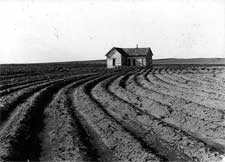 The Great Depression was a massive global economic recession (or "depression") that ran from 1929 to 1941. It led to massive bank failures, high unemployment, as well as dramatic drops in GDP, industrial production, stock market share prices and virtually every other measure of economic growth. It bottomed out in 1933, but it would be well after World War II before such indicators as industrial production, share prices and global GDP could surpass their 1929 levels. The Great Depression was a massive global economic recession (or "depression") that ran from 1929 to 1941. It led to massive bank failures, high unemployment, as well as dramatic drops in GDP, industrial production, stock market share prices and virtually every other measure of economic growth. It bottomed out in 1933, but it would be well after World War II before such indicators as industrial production, share prices and global GDP could surpass their 1929 levels.
What gave this downturn the name the "Great Depression" was that it is by far the largest sustained decline in industrial production and productivity from the century and a half where economic records have been kept with any regularity, and it reached virtually the entire industrialized world and their trading partners in peripheral nations. The Great Depression can refer to the economic event, but it can also refer to the cultural period, often called simply "The Depression", and to the political response to the economic events.
 Economists, historians, and political scientists have posed several theories for the cause, or causes, of the Great Depression with surprisingly little consensus. It remains one of the most studied events of history to economic historians. Major theories proposed include the stock market crash of 1929, collapse of the gold standard, collapse of international trade due to the Smoot-Hawley Tariff Act, Federal Reserve policy, and many other influences. The question in economic theory is which effects drove the Great Depression, and therefore which policy actions may have caused or should have been taken to prevent, ameliorate, or end, the Great Depression. Economists, historians, and political scientists have posed several theories for the cause, or causes, of the Great Depression with surprisingly little consensus. It remains one of the most studied events of history to economic historians. Major theories proposed include the stock market crash of 1929, collapse of the gold standard, collapse of international trade due to the Smoot-Hawley Tariff Act, Federal Reserve policy, and many other influences. The question in economic theory is which effects drove the Great Depression, and therefore which policy actions may have caused or should have been taken to prevent, ameliorate, or end, the Great Depression.
 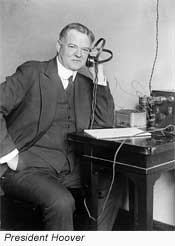 Early in the Depression, Treasury Secretary Andrew Mellon advised President Hoover that a shock treatment would be the best response. Hoover did not believe that the government should directly aid the people, but insisted instead on "voluntary cooperation" between business and government. Hoover believed that the stock market crash was a regular hiccup in the capitalistic cycle, and that it need not affect the greater economy. Hoover asked large business leaders to voluntarily "take a hit" for the greater good of the nation. Business leaders agreed initially, but in practice no business wanted to risk failure for the good of the economy. Hoover also promoted a centralized bank—led by business, not the government like the eventual FDIC—that would hold money in reserve to secure against bank runs. Once again, business agreed that it was a good idea, but they were incapable of coordinating such an organization on their own. Hoover's "voluntary cooperation" failed to gather support. Early in the Depression, Treasury Secretary Andrew Mellon advised President Hoover that a shock treatment would be the best response. Hoover did not believe that the government should directly aid the people, but insisted instead on "voluntary cooperation" between business and government. Hoover believed that the stock market crash was a regular hiccup in the capitalistic cycle, and that it need not affect the greater economy. Hoover asked large business leaders to voluntarily "take a hit" for the greater good of the nation. Business leaders agreed initially, but in practice no business wanted to risk failure for the good of the economy. Hoover also promoted a centralized bank—led by business, not the government like the eventual FDIC—that would hold money in reserve to secure against bank runs. Once again, business agreed that it was a good idea, but they were incapable of coordinating such an organization on their own. Hoover's "voluntary cooperation" failed to gather support.

Farmers from Texas to the Dakotas and southern Canada were severely affected by a major drought which combined with wide spread erosion to create widespread dust storms, beginning in 1933. This resulted in hundreds of thousands of internally displaced persons fleeing from the Great Plains, both within their own states and to western states, especially California.

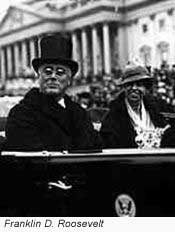 Hoover was succeeded as President by Franklin D. Roosevelt. From 1933 onward, Roosevelt argued a restructuring of the economy would be needed to prevent another or avoid prolonging the current depression. New Deal programs sought to stimulate demand and provide work and relief for the impoverished through increased government spending. Hoover was succeeded as President by Franklin D. Roosevelt. From 1933 onward, Roosevelt argued a restructuring of the economy would be needed to prevent another or avoid prolonging the current depression. New Deal programs sought to stimulate demand and provide work and relief for the impoverished through increased government spending.
These reforms (together with relief and recover measures) are called by historians the First New Deal. It was centered around the use of an alphabet soup of agencies set up in 1933 and 1934, along with the use of previous agencies such as the Reconstruction Finance Corporation, to regulate and stimulate the economy. By 1935, the "Second New Deal" added social security, a national relief agency (the Works Progress Administration, WPA) and, through the National Labor Relations Board, a strong stimulus to the growth of labor unions. Unemployment fell by two-thirds in Roosevelt's first term (from 25% to 9%, 1933 to 1937) but then remained high until 1942.
In 1929, federal expenditures constituted only 3% of the GDP. Between 1933 and 1939, they tripled, funded primarily by a growth in the national debt. The debt as proportion of GNP rose under Hoover from 20% to 40%. Roosevelt kept it at 40% until the war began, when it soared to 128%. After the Recession of 1937, conservatives were able to form a bipartisan conservative coalition to stop further expansion of the New Deal and, by 1943, had abolished all of the relief programs.
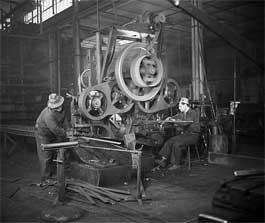 By 1936, all the main economic indicators had regained the levels of the late 1920s, except for unemployment, which remained high. In 1937, the American economy unexpectedly fell, lasting through most of 1938. Production declined sharply, as did profits and employment. Unemployment jumped from 14.3% in 1937 to 19.0% in 1938. The Roosevelt Administration reacted by launching a rhetorical campaign against monopoly power, which was cast as the cause of the depression, and appointing Thurman Arnold to act; Arnold was not effective, and the attack ended once World War II began and corporate energies had to be directed to winning the war. By 1939, the effects of the 1937 recession had disappeared. By 1936, all the main economic indicators had regained the levels of the late 1920s, except for unemployment, which remained high. In 1937, the American economy unexpectedly fell, lasting through most of 1938. Production declined sharply, as did profits and employment. Unemployment jumped from 14.3% in 1937 to 19.0% in 1938. The Roosevelt Administration reacted by launching a rhetorical campaign against monopoly power, which was cast as the cause of the depression, and appointing Thurman Arnold to act; Arnold was not effective, and the attack ended once World War II began and corporate energies had to be directed to winning the war. By 1939, the effects of the 1937 recession had disappeared.

The depression of 1929 effectively ended in 1937, except for persistent high unemployment. Unemployment declined after 1940 for a variety of interrelated reasons. The government began heavy military spending in 1940 and started drafting millions of young men that year; by 1945 16 million had entered service. But that was not enough to absorb all the unemployed.
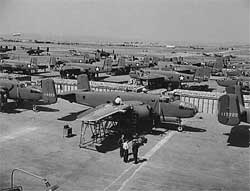 The New Deal was rooted in new ideas, but also in economic orthodoxy of balanced budgets, and restraint of federal power. It represented bigger and broader government than ever before, but not as big as government would later become: spending on the New Deal was far smaller than on the war effort. In short, federal expenditures went from 3% of the GDP in 1929 to about 33% in 1945. The big surprise was just how productive America became: spending financially cured the depression. Between 1939 and 1944 (the peak of wartime production), the nation's output more than doubled. Consequently, unemployment plummeted—from 19% in 1938 (already down from 1933's 24.9% peak) to 1.2% in 1944—as the labor force grew by ten million. The war economy showed just how large the fiscal stimulus required to end the downturn of the Depression was, and it led, at the time, to fears that as soon as America demobilized, that it would return to Depression conditions and industrial output would fall to its pre-war levels. There is general agreement that it was World War II which finally provided the United States Federal Government with the political will to buy its way out of the Depression, and resolve the global monetary crisis by the imposition of the Bretton Woods system. The New Deal was rooted in new ideas, but also in economic orthodoxy of balanced budgets, and restraint of federal power. It represented bigger and broader government than ever before, but not as big as government would later become: spending on the New Deal was far smaller than on the war effort. In short, federal expenditures went from 3% of the GDP in 1929 to about 33% in 1945. The big surprise was just how productive America became: spending financially cured the depression. Between 1939 and 1944 (the peak of wartime production), the nation's output more than doubled. Consequently, unemployment plummeted—from 19% in 1938 (already down from 1933's 24.9% peak) to 1.2% in 1944—as the labor force grew by ten million. The war economy showed just how large the fiscal stimulus required to end the downturn of the Depression was, and it led, at the time, to fears that as soon as America demobilized, that it would return to Depression conditions and industrial output would fall to its pre-war levels. There is general agreement that it was World War II which finally provided the United States Federal Government with the political will to buy its way out of the Depression, and resolve the global monetary crisis by the imposition of the Bretton Woods system.
|